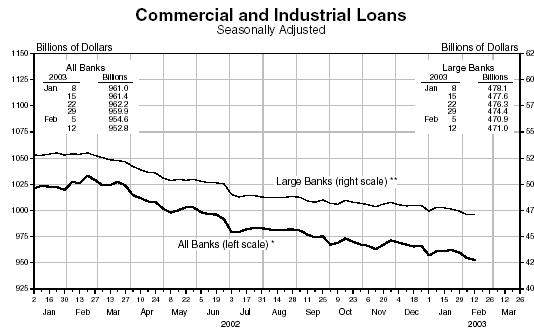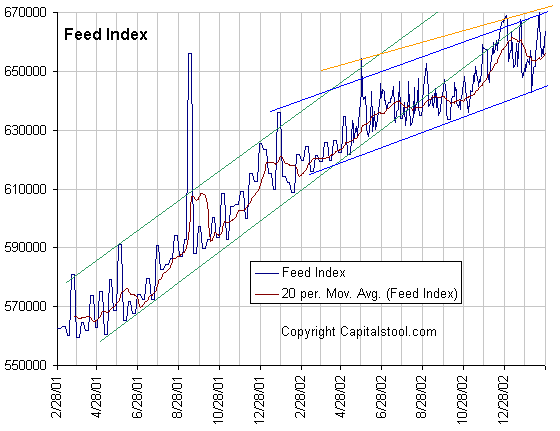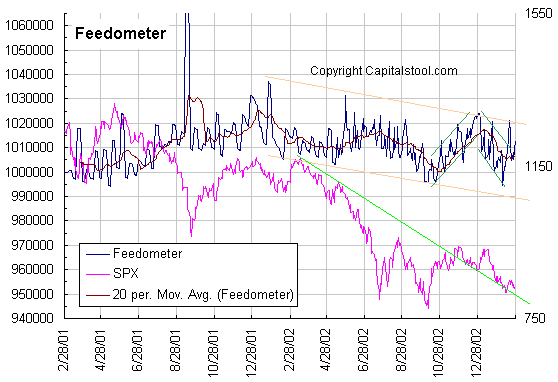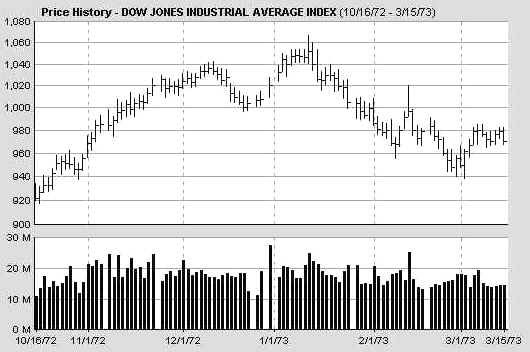Archives 12/30/01, 1/1/02, 1/2/02, 1/3/02, 1/4/02, 1/7/02, 1/8/02, 1/09/02, 1/10/02, 1/11/02, 1/14/02, 1/15/02, 1/16/02, 1/17/02, 1/18/02, 1/22/02, 1/23/02, 1/24/02, 1/25/02, 1/28/02, 1/29/02, 1/30/02, 1/31/02, 2/1/02, 2/4/02, 2/5/02, 2/06/02, 2/7/02, 2/9/02, 2/11/02, 2/12/02, 2/13/02, 2/14/02, 2/16/02, 2/19/02, 2/20/02, 2/21/02, 2/23/02, 2/25/02, 2/26/02, 2/27/02, 2/28/02, 3/1/02, 3/04/02, 3/05/02, 3/06/02, 3/7/02, 3/10/02,3/11/02, 3/12/02, 3/13/02, 3/14/02, 3/15/02, 3/18/02, 3/19/02, 3/20/02, 3/21/02, 3/22/02, 3/25/02, 3/26/02, 3/28/02, 3/30/02 4/1/02, 4/2/02, 4/3/02, 4/4/02, 4/6/02, 4/8/02, 4/9/02, 4/10/02, 4/11/02, 4/13/02, 4/15/02, 4/16/02, 4/17/02, 4/18/02, 4/20/02, 4/22/02, 4/23/02,4/24/02,4/25/02, 4/26/02, 4/27/02, 4/29/02, 4/30/02 5/01/02, 5/2/02, 5/4/02, 5/6/02, 5/07/02, 5/8/02, 5/09/02, 5/10/02, 5/13/02, 5/14/02, 5/15/02, 5/16/02, 5/17/02, 5/20/02, 5/21/02, 5/22/02, 5/23/02, 5/24/02, 5/28/02, 5/29/02, 5/30/02 6/01/02, 6/3/02, 6/4/02, 6/5/02, 6/6/02, 6/7/02, 6/10/02, 6/11/02, 6/12/02, 6/13/02, 6/14/02, 6/17/02, 6/18/02, 6/19/02, 6/20/02, 6/22/02, 6/24/02, 6/25/02, 6/26/02, 6/27/02, 6/30/02 7/1/02, 7/4/02, 7/5/02, 7/11/02, 7/14/02, 7/15/02, 7/16/02, 7/17/02, 7/18/02, 7/19/02, 7/22/02, 7/23/02, 7/24/02, 7/25/02, 7/27/02, 7/29/02, 7/30/02 8/1/02, 8/3/02, 8/5/02, 8/6/02, 8/7/02, 8/8/02, 8/10/02, 8/12/02, 8/13/02, 8/14/02, 8/15/02, 8/16/02, 8/19/02, 8/20/02, 8/21/02, 8/22/02, 8/23/02, 8/26/02, 8/27/02, 8/28/02, 8/29/02, 8/30/02 9/3/02, 9/4/02, 9/5/02. 9/6/02, 9/9/02, 9/10/02, 9/11/02, 9/12/02, 9/13/02, 9/16/02, 9/17/02, 9/18/02, 9/19/02, 9/20/02, 9/23/02, 9/24/02, 9/25/02, 9/26/02, 9/27/02, 9/30/02 10/1/02, 10/2/02, 10/3/02, 10/4/02, 10/7/02, 10/8/02, 10/9/02, 10/10/02, 10/11/02, 10/14/02, 10/15/02, 10/16/02, 10/17/02, 10/18/02, 10/21/02, 10/22/02, 10/23/02, 10/24/02, 10/25/02, 10/28/02, 10/29/02, 10/30/02, 10/31/02 11/1/02, 11/4/02, 11/5/02, 11/6/02, 11/7/02, 11/8/02, 11/11/02, 11/12/02, 11/13/02, 11/14/02, 11/15/02, 11/18/02, 11/19/02, 11/20/02, 11/21/02, 11/22/02, 11/25/02, 11/26/02, 11/27/02, 11/29/02 12/2/02,
12/3/02, 12/4/02,
12/5/02 1/1/03, 1/2/03, 1/03/03, 1/6/03, 1/7/03, 1/8/03, 1/9/03, 1/10/03, 1/13/03, 1/14/03, 1/15/03, 1/16/03, 1/17/03, 1/21/03, 1/22/03, 1/23/03, 1/24/03, 1/27/03, 1/28/03, 1/29/03, 1/30/03, 1/31/03 2/3/03, 2/4/03, 2/5/03, 2/6/03, 2/7/03, 2/10/03, 2/11/03, 2/12/03, 2/13/03, 2/14/03, 2/18/03, 2/19/03, 2/20/03, 2/21/03, 2/24/03, 2/25/03, 2/26/03
 Doc's view of the Street. |
The Anals of Stock ProctologyPublished weeknights by
8:30PM Happy Acres, Florida Time The American
Academy of Stock Proctology and Is your subscription up for renewal? If you want to renew, do nothing, unless your credit card has expired. Please be sure your credit card info is current. If your credit card has expired, you must enter the new expiration date in your Paypal account in order for your subscription to be processed. If you subscribed via Paypal, your subscription will be renewed for one year on the 90 day anniversary of your sign-up and your credit card will be charged. If you want to cancel, use the button at the bottom of the page. This applies only if you subscribed through Paypal. Mailed-in subscriptions are for 1 year. If you subscribed by prior contribution, I will send you a notice before your subscription expires. If you have any questions, see the subscription page and FAQ's. If you can't find the answer, email me. Big Fine Print Doc does not make trading recommendations. This update reports time cycle estimates and centered moving average projections based on the Hurst cycle analysis method, and other techniques. This publication is for entertainment and educational purposes only. Doc assumes no responsibility for the accuracy or inaccuracy of the estimates and projections presented. The market may or may not meet the projections. Stoolies should thoroughly familiarize themselves with the methodology before trading based on this method. Those who do not have the time or inclination to develop a trading strategy based on testing and research should not trade. Trade at your own risk. Yadda yadda. How's your motha? More disclaimers at the bottom of the page. Intraday Updates 2/28/03 1:00 PM The market is following cyclical norms, which is a surprise. Looking for a 5 hour cycle low around 1:30 and a 1 day low around 3:00 at the posted cmaps. Upside targets for all cycles up to 8 days were hit on the AM rally. The 3 day cycle is rolling over. The 8 day cycle is close. Still, expect a jam in the last hour. Monday should belong to bears though. Chart below. Get regular updates throughout the day in Stooltrading. 8:50 AM Doc will be away fro the screen for about a half hour, so is posting this early. Another "flagpole" jamjob this morning. The upside cmap on the fucutures is 843. The 3 day cycle cmap from the fucutures is similar, 843-45. Highly unlikely that this "manipulation wave" will have any follow through. Fido will have to step in again late to prop it up. After the opening pop and recoil look for the manipulation wave high around 10:30. Intraday Turdsday - It is certainly frustrating to watch this manipulation day after day. But the manipulators seem to have no one to hand off to So they have to come back in and re-support. They will run out of bullets at some point. These bursts are not true cycle waves, so lets call them manipulation waves. The manipulation lasted until 10:45.Nobody took the handoff and the market sold off into a manipulation wave low at 3:00 at which point the manipulators stepped in again near a shport trend line. They held up into the close. That should be a 5 hour cycle high, but a 1 day cycle high with a cmap of 840 is pending tomorrow. The 3 day "cycle" cmap is around 843. Pre Market Update at 9:15 AM NY time. Get StoolieSignal Special offer here only! The cycle map below is en estimate of how the market might behave over the next few hours. Should the pattern be broken, the map should be redrawn to fit the actual. Cmaps and times shown are guidelines only. Cycles vary in wavelength and amplitude. Directional changes within an hour of the expected turn and a few points of the cmap should be respected. The indicators rule. Times and prices are the projected cycle highs and lows with cmaps. 5-8 Day Cycle______ 2-3 Day Cycle_______ 5 Hr-1 Day Cycle
Turdsday's
Markets Fed Turdsday - Bumpy Ride Ahead 2/27/03 First let's recap last night's MoGauge, since this is where 86% of the money originates.
The MoGauge is the weekly Mortgage Applications Index released by the MoGauge Bankers Ass. of America. Mortgage applications get funded about 4-8 weeks after the application is taken. When the GSE's hold those loans in their portfolios, they then turn into money through the magic of money market fund intermediation. Broad money supply grows, and that flows into the markets and economic activity. Likewise, when mortgage activity declines, money growth slows or even goes negative. In effect, the MoGauge has the potential of telling us to what degree money will be added to the system in a month or so. Big jumps in the MoGauge tend to be followed by big stock market rallies along with big jumps in money supply. When these bulges subside, the market follows a month or two later.
No sooner had that been posted, than this morning the January new home sales bomb came out, with a surprise 15% drop. The only surprise here was that they managed to fudge the data for as long as they did. None of that mattered though. It's the end of the month and Fido wanted to walk their stock. Broad money supply exploded
upward again in the week ended February 17. Considering the 1 to 2 months
it takes for new mortgage applications to be funded, and strong mortgage origination
after mid December, we should expected liquidity to be plentiful for at
least the next month or two, and to continue that way until the refi engine
implodes sometime in the next thousand years. Can Al engineer another miracle in the bond market, and keep the
refi bubble going indefinitely? What is it they say about teaching a
man to print money and he can Feed for a lifetime? M1 and checking deposits upticked
in the week ended 2/17. With Feed strengthening again, and the refi engine
still humming, we may be seeing the effects of both the Feed pump-up, and refi
bubble trickle down. Doc hates to say it, but this could put a floor under
the stock market until liquidity conditions change for the worse. It's definitely
stoking the fires of inflation, and that will eventually kill the bond
market and in turn the stock market. It's the short run that's worrisome
for bears. It does appear that there is some degree of bubble flatulation
going on. Gold and gold stocks will certainly turn up again if
this continues. The growth in bank credit is
entirely due to increased holdings of securities. Lending activity is dead flat.
That means instead of lending bankers are bonkers over Treasuries, Agencies,
corporates, and mortgage backed. There's plenty of
those, and since the banks aren't lending they have to invest in
something. Doc agrees with Doug
Noland that the Credit Bubble is in its end stage blowoff, but clearly
it's not dead yet. C&I loans continue to plunge.
There aren't many credit worthy borrowers around any more, but hey, the banks will buy
the same company's worthless paper so long as it's wrapped into an ABS
cesspool with
other worthless paper and stamped with a worthless credit insurer's
worthless guarantee. The commercial paper market
isn't much better. But if you can dump your credit needs into a pool and
sell it in the ABS market, no problemo, right? Liquidity is flowing, and seasonal 401K flows are also heading into institutional coffins. Yes I said coffins. It's where dead money gets buried. This is not a comfortable time to be short from that standpoint, but the stock market's technical indicators are inconclusive, and Doc still sees the cycles as having one more decline, probably shallow, before a bigger rally beginning in late March. He does not say that with great confidence. That's for sure. Who can have confidence in an environment where monetary and market manipulation rules and the greatest credit bubble in the history of the world runs unabated? Whatever lies ahead, it looks like it's going to be a bumpy ride, one where everybody loses their grip in the end. Under the circumstances, the object should be to just stay alive. The forecast path below suggests the 6-7 week cycle (green) top is in, with the 10-13 week cycle (red) still heading lower into mid March, but at a continued shallow slope with lots of bounces and retreats.
Doc's Pooper Scooper. Be a Johnny Applestool! Help spread the Stool! Feel free to repost snippets from the Anals on message boards around the web. Just give a link back! Many tanks - Doc The Feed added $7.5 billion in overnight repos against $4.25 billion in expirations, and rolled $3 billion in 28 day repos. The also did a $680 million coupon pass, for a total net add of $3.93 billion. The overnight repos are the only expirations tomorrow. Total Feed is beginning to climb again. This is concurrent with a series of huge Treasury auctions raising gazillions in new money. The additional Feed that we are now seeing is essentially monetization of the new Treasury debt. It is inflationary, but is has no impact on the stock market because it is being sucked up by the new tidal wave of Treasury supply. The effects are showing up in surging commodity prices, but not yet in the bond market. That's where the Feed support is going. The Treasury market is also benefiting from a flight to safety. (Soon to be an oxymoron.) Two
trends are evident on the Feed Index, which is the total Fed holdings of
loans and securities. One is the 10% growth trend beginning in May of
2001. The blue channel going back to last December suggests a 5% growth rate. Look at the 4 week moving
average (brown line) and compare it with the slope of the two larger
channels for an indication for whether the slope of short term growth is
slower or faster than the 2 longer term trends. The short term Feedometer has turned up as Al absorbs all the new Treasury supply and supports the bond market. Unless the longer term downtrend channel is broken, there should be no impact on the stock market. The
Feedometer theoretically measures excess Feed available for bond or stock
market jamming. Al selects a trend level he feels is needed to reflatulate
the economy. The Feedometer measures the difference between the apparent
trend target, and actual day to day Feeding (Fastow Feedometer), as well
as a four week moving average (Slowmo Feedometer). A break above the gold trendline might indicate a more aggressive jamming policy. Department of Yes We have No Inflation No comment necessary. Except maybe
that it's strange the bond market seems to ignore it. 10 Year Bond yields made an intraday double bottom near 3.75, at downside short cycle cmaps. The 13 week cycle cmap is still pointing to 3.60-65. A test of the October low of 3.56 looks increasingly likely. Falling yields in the short run are giving Al room to Feed aggressively, or, and this may be more likely, it is the Feeding itself which is supporting the price and driving yields lower. In addition to increasing repos, Al has been doing 600 million plus in coupon and bill passes every few days. A few hundred million here and a few hundred million there. Pretty soon you're talking real money. The 10-12 month cycle oscillator is
topping out here. The 6 month indicator looks like its going the opposite
direction. If the 12 month oscillator rolls over decisively, the bias will be to
the downside. If it simply hovers, an upturn in the 6 month cycle indicator
would signal rising yields. Which will it be? The moment of truth is
approaching. Long Term 2/21/03-
The 6 month and 10-12 month cycles will continue to oppose each other as the
10-12 month cycle tops out and the 6 month bottoms. This will lead to a months
long extension of the trading range as the long waves bottom. They should begin
to turn up after the next 10-12 month cycle low in the second half of
2003. Dow Inflatables- In spite of
the end of month fun and games. (Down Fido.
Down Boy!) The Dow didn't break wind, uh, I mean, break trend. The 10-13
week cycle cmap remained pointed toward the 7350 area. That can and
will change, but with the 4-7 week cycles composite oscillator rolling over, Doc
will still give the benefit of the doubt to that projection. A close above
7950 would get Doc to crapitulate, and admit that we are in yet another one of
the series of mind bending swups. If you've been around long enough, you
may get feelings of deja vu. But of course, no two periods are ever quite
the same. What happened after that? The next year,
you don't wanna know. It wasn't until after a continuing series of short-killing rallies in 1974, that the final plunge began in May. That one lasted 5 months and carried the Dow to 570. But in the meantime, almost all the public shorts had long since been wiped out. All these wild gyrations today? Nothing new. Nothing new at all. Institutions are simply throwing money at the tape in an effort to protect what they have left, and survive. They did exactly the same thing in 1973 and 1974. It was and is a mean, stupid, and futile gesture on somebody's part. All of Doc's daily cycle charts
are powered by METASTOCK Portfolio Sphincters Index (SPX) and Sentiment Cycle Chart Short Term Cycles The short cycle oscillator is turning down in the distribution (aka overbought) zone, signaling a top in the 6-7 week cycle. The 6-7 week cycle has been the dominant trading cycle since last July. Upside cmaps were hit last week but the topping process takes time. Doc expects this cycle to turn lower. The 6-7 week cycle oscillator on the chart below also began its turn and the 17 day ROC is on the cusp of either a sell signal or a renewed push up. A down phase lasting 4-5 weeks should lie ahead if these indicators turn down decisively in the next day or two. If they turn up, the swup continues and prices push a little higher. 10-13 Week Cycle Roughly 3 to 6 weeks should also remain in the 10-13 week cycle down phase, in spite of the fact that some cycle indicators are headed higher. The 29 day ROC is still in a mild downtrend and is sitting on a 7 month uptrend line. Only if all these indicators turn up together, will we know the down phase is over. If they begin to turn back down at these low levels, the bottom could fall out. At any rate, we should know one way or the other within a day or two. This market is gonna either go up, down or sideways. (Does Doc sound cynical?) The preliminary downside cmap for this cycle is around 790 but still subject to change either way. Another big down day this week will push the target lower. Waffling around would leave it unchanged. An immediate rally would pull the cmap higher. Sentiment VIX fell sharply. (up on the inverted scale chart). Touching the inner channel line, then reversing, indicates a short term top, or confirms a downtrend. Extending into the low 30's, then reversing, would signal an intermediate top. The next significant intermediate cycle low should reach at least 50-60.
The 17 day rate of change is a proxy for the
6-7 week cycle. The 29 day rate of change is a proxy for the 10-13 week
cycle. The blue line overlaid on the price chart is the 10-13 week cycle
oscillator, while the red line is the 6-7 week cycle oscillator. The VIX
is a measure of implied options volatility reflecting relative fear or
complacency. It is plotted below on an inverse scale to better show the
relationship to the price chart. The "Stool Bands" may reflect
either 6 month or 10-12 month cycles. Long Term View 2/21/03 Linear Regression Analysis- The rally off the July-October lows was the first to fail to reach the upper regression projections within 4 months of breaking the lower channel in the bear market. The 1 year regression is sloping down more sharply than at any time throughout this bear. Using METASTOCK, Doc took the 12 month regression channel with the time span fixed at one year, and moved it across the entire chart. In no prior 12 month period was the down slope as sharp as it is now. Having failed to break this 1 year regression channel, the market may be in a period of extended and accelerated decline. The last line of defense was the long term central regression projection. The lower blue projection line has been a congestion area since July, delineating shport on the way down. The 1 year center regression line also indicated an area of shport.
Long term cycle configurations are shown on the chart below. Keep in mind that the longer the nominal cycle length the greater the variance in the actual length of the cycle. The 18 month cycle can range from 12 to 24 months. The nominal 4 year cycle can be 3 years. It can be five years. Four years, give or take a few months has been most typical, especially in the latter half of the twentieth century, but a 3 year cycle is not uncommon. In the first half of the century, cycles frequently lasted 3 or 5 years. Hurst called them "nominal" cycles because cycles vary in length. Looking at charts going back 100 years or more you can see that a 1 year variance is not uncommon for the 4 year cycle. Doc has reformulated the long term forecast taking into account recent price action. The 3-4 year cycle low appeared to be between the April and September 2001 lows. Reconsidering the action of last July-October, that was more likely the 3-4 year cycle low. The 4 year cycle actual price high was in January 2002. As opposed to the price high, the wave high is where the upper edgeband of the wave envelope contacts the upper band of the next longer wave. That was from last November, when speculative fever was at its peak, through early January, when we saw a second wave of speculative frenzy. The degree of speculative mania during the 3 month trading range in the fourth quarter of 2002 was consistent with a major 4 year cycle top. Cats, dogs, and pigs could fly. Doc now thinks this speculative 4 year cycle top could extend though mid year of 2003, and that repeated bursts of manic speculation such as we saw this week, will continue. Because of the sharp descent in the secular trend, the final high of the 3-4 year cycle will be lower than the high reached in January. The 3-4 year cycle is irrelevant for practical purposes. The power of the secular trend has suppressed it. The dominant cycle in recent years has been the nominal 18 month cycle. This cycle has a typical variance of 6 months, so that it can last from one to two years. The July-October double bottom was an 18 month cycle low. The 18 month cycle wave high is ideally due around mid-year but the price high was in December at 940. The current projection puts the wave high in mid-year 2003 around 880. After that, this cycle should turn relentlessly lower. The 2002 lows should be broken in the third or fourth quarter of this year. At the current secular trend rate of decline, the mid year 2004 low extrapolates to around 600. In the event of a panic low an extreme of 525 is possible. Currently the 10-12 month cycle is completing a top. The 6 month cycle is making a low. Churning is the typical result when these two cycles juxtapose. The 12 month cycle should be dominant, so that the general tilt will be slightly toward the downside. This should result in the up phase of the 6 month cycle playing out as a swup. But there could be huge swings within the channel. Doc thinks it will be necessary to focus on shorter term cycles for trading purposes. The third quarter of 2003 looks like a period with a high probability of extended decline. The 6, 10-12, and 18 month cycles all project to be in down phases during that period. As noted in this space last week, the index had moved to the bottom of the 18 month channel. The 13 week cycle down phase was expected to last into March or early April but with limited downside. This week's action reaffirmed that the remainder of the down phase should be shallow. That will only change if we see a big downturn this week. Even if that were to occur, a low below 780 is highly unlikely over the next two to four months. After one or more weak rallies following "successful retests" of the lows, there will be another 20% killer wave down in the second half of 2003. Check out the symmetry of the bubble's inflation and deflation. (Subject to
change without notice. Dealer title, tax, and tags not included. Consult
your local directory for prices in your area. Past performance is not necessary
to be a Wall Street analcyst.) The Cycle Conditions tables include cycle phase and a wild guess as to number of periods to the next turn, in days for the shortest cycles, weeks (W) or months (M) for the longer ones. This is a fluid exercise, in other words, the projections are likely to be wrong, but they force us to be vigilant for key turning points, and frequently work well enough to prevent costly misreadings. SPX Cycle Conditions as of 2/27/03
PTT - Periods Till Turn Suctor Watch and Stoolwethers- Updated each morning between 8 AM and 9:00 AM NY time. Nasgap Charts The Nas has been stronger than the SPX, but cycle direction and timing will be similar. In the interest of publishing the Anals earlier in the evening Doc is presenting the charts and data without commentary, as it is largely redundant relative to the SPX commentary above. Cycle Chart Long Term View 2/21/03 The Nas is stronger than the broad market, typical of the speculation during periods of major cycle tops. The 12 month cycle is forming a top. Both the 18 month and 3-4 year cycle highs appear due in the second quarter of 2003. The 3-4 year cycle low would be due no earlier than mid 2004 and possibly not until 2005. Ultimately the 3-4 year cycle low should be around 400, or below on a selling panic. After the following bull phase, the next bear phase will end with the Nasdaq folding, and the bigger stocks going over to the NYSE, perhaps in 2008 or 2009. Looks like the venerable Amex will be closed much sooner.
Nasdaq Cycle Conditions as of 2/27/03
PTT
- Periods Till Turn Suctor Watch and Stoolwethers- Updated each morning between 8 AM and 9:00 AM NY time. Long Bong Hit - See top of page. Golden Stool 2/27/03 PM Gold fell sharply.
Intermediate downside cmaps are wavering between 340 and 345 on a closing basis.
The 8 day cmap is pointed at 339 on a closing basis.
The 9 month cycle oscillator looks like a top but the down phase should be
sideways. Intermediate cycle indicators are bottoming and short cycle
oscillators have turned up.
Long Term 2/21/03- Doc projects gold to recover and make new highs in the second
half of 2003. HUI Dumpty took another dump, but Doc STILL thinks they will soon be putting HUI back together again. Both short and intermediate cycles look like they are bottoming. OK, further shakeouts can't be ruled out. When the cycle oscillators turn up in unison, we'll see a good rally. We getting closer. HUI Cycle Conditions as of 2/27/03
Long Term 2/21/03- After consolidating for a few months, HUI is expected to break out to the upside near mid-year.
Uncle Buck's Illness Uncle Buck was up just a bit. It appears his short cycle oscillator wants to turn up, and the 13 week cycle indicator is still rising, although in a top zone. So the swup is not over yet. The range is narrowing. The upside cmap for the 10-13 week cycle is still around 101, and downside cmaps for short cycles are around 99. The swup should end within a week or 10 days at most, then begin to move lower, although probably not dramatically. Chart as of 2/27/03 close Uncle B and SPX (gray line on chart)
usually move together because Uncle Buck's index measures the flow of
capital into and out of US paper assets. The relative magnitude of the
moves varies and wide divergences are followed by convergence.
Central banks intervening to buy dollars are not
going to help stock prices, and cannot drive sustainable advances in the
dollar.
Longer Term 2/21/03 Buck is going much lower but perhaps not until the second
half of 2003. In the meantime he could churn around 100.
Here's another case where the 6 month and 10-12 month cycles may oppose
for a couple of months, leading to a trading range. Get StoolieSignal Special offer here only! Suctor Watch and Stoolwethers- Now posted on separate page. Updated each morning between 8 AM and 9:00 AM NY time. See you in Intraday Stool. Dr. Stepan N. Stool Share your thoughts on the Stool Pigeons Wire.
Renewals Thank you for subscribing to the Anals of Stock Proctology. Your trial subscription will run for 90 days. At the end of that period your subscription will renew automatically, unless you cancel. If you wish to cancel your subscription use the button below. If you want to renew your subscription do nothing. Your subscription will renew and your credit card or Paypal bank account will be charged. If you want to renew, be sure your credit card information in your Paypal account is current. Paypal will not renew your subscription if the card has expired! Explanation of Intraday Commentary-Build charts at http://www.livecharts.com. For custom time bars insert a comma after symbol and number of minutes, e.g. compx,90. This will give you a bar chart of the Nas with 90 minutes per bar. The one day cycle is usually most clear with 8 minute bars and 26/18 stochastics. It varies from day to day. Sometimes 6 minutes works best. Experiment to find the best fit for your trading style, and the market's dominant frequency at the time. The goal here is primarily to monitor the condition of the 8 and 13 day cycles. I typically use 90 minute bars with 26/18 stochastics for the 13 day cycle proxy on the indices during regular trading hours. Other cycles use 26/18 stochastics with the following: 8 days- 60 minute bars On the 24 hour futures charts, use a time per bar approximately 3 to 4 times the above number of minutes, to represent the cycles listed above. About centered moving average projections. ABBREVIATIONS: cma: centered moving average |
































![[Most Recent HUI from www.kitco.com]](http://www.weblinks247.com/indexes/idx24_hui_en_2.gif)
![[Most Recent XAU from www.kitco.com]](http://www.weblinks247.com/indexes/idx24_sp500_en_2.gif)
![[Most Recent Quotes from www.kitco.com]](http://kitconet.com/charts/metals/gold/t24_au_en_usoz_2.gif)